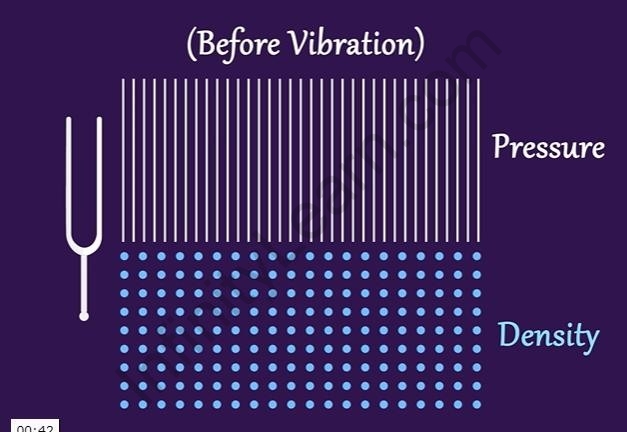Table of Contents
Table of Contents
- Density and Pressure Variations
- Pressure Variation
- Density Variation
- Summary
- What’s Next?
In the last segment, we learnt that sound waves are longitudinal waves. In this segment, we are going to learn about the density and pressure variations generated by a sound wave.
Density and Pressure variations
We have seen in our previous segments how sound travels through a medium. It forms regions of high pressure called compressions and regions of low pressure called rarefactions. This series of compressions and rarefactions is what we call a sound wave. When a sound wave moves through a medium, the density and pressure of the medium vary. Let us see how they vary with the example of a tuning fork.
We use the tuning fork as our source of sound, and the air as a medium of propagation. The following figures show the pressure and density in the medium before vibration. When the tuning fork is not set into vibration, the pressure and density are the same everywhere in the medium.

Pressure and Density variation before vibration
First, let’s discuss the pressure variation.
Pressure Variation
We will concentrate on the right prong. So when this prong moves away from its mean position, it applies pressure on the surrounding air particles. Due to this, the pressure in the nearby region increases and it keeps on increasing until it attains its maximum value. This region has the maximum pressure and is called peak compression.
It is called a peak or maximum because at this point the prong has travelled its maximum displacement from the rest position.

Pressure Variation: Prong at right extreme
Now as the prong starts its journey towards the mean position the pressure reduces in the adjacent region and keeps on reducing as the prong continues its motion towards the left. And the compression that was present adjacent to the prong has travelled to the next region in the form of disturbance.

Pressure Variation: Prong at mean position
When the prong has travelled its maximum displacement towards the left, we get the region of lowest pressure adjacent to it.






